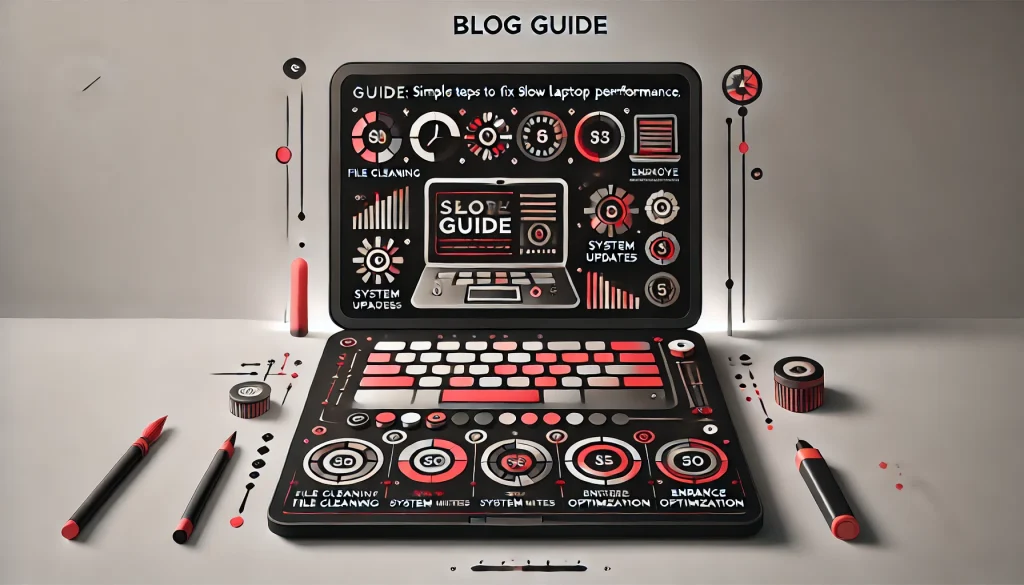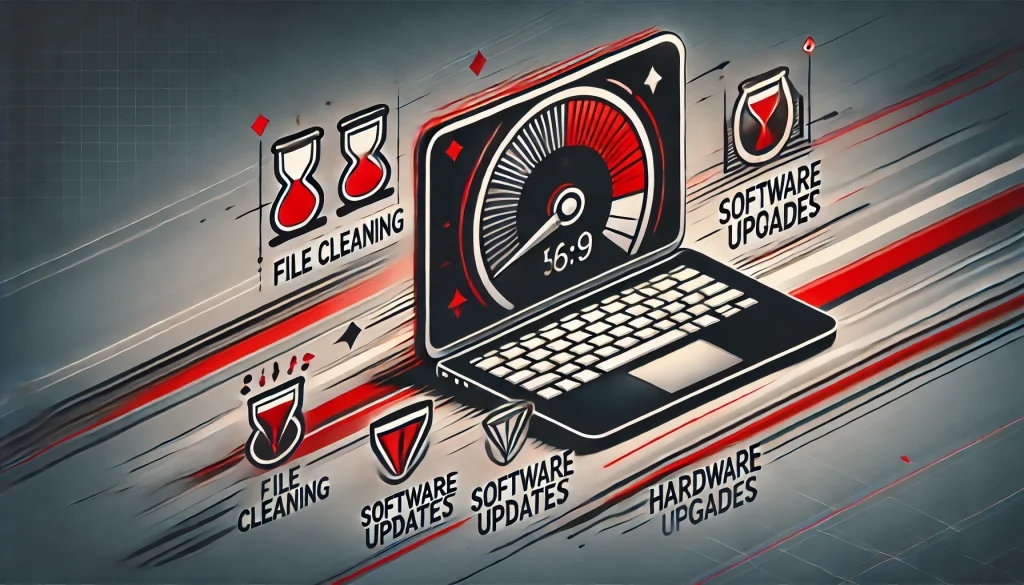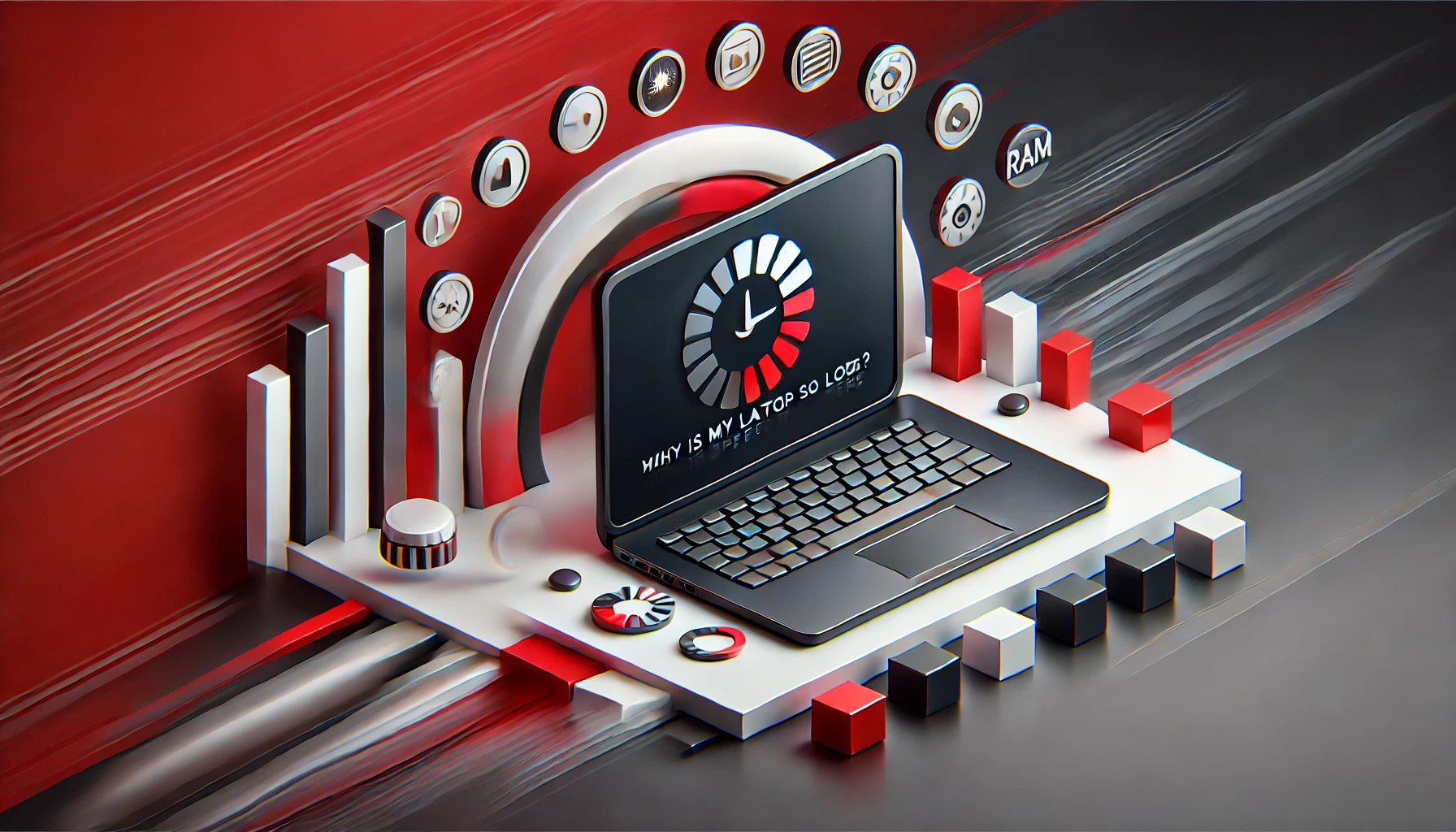It’s frustrating, isn’t it? One minute, your laptop is working like a dream—running smooth as silk. The next thing you know, it’s dragging along, freezing mid-task, and taking what feels like an eternity to load even the simplest of programs. Whether you use it for work, gaming, or just browsing the web, a slow laptop can drive anyone crazy. But why does it happen? Well, the reasons could range from a cluttered hard drive to background programs hogging your resources, or even just a lack of regular maintenance. Whatever the cause, dealing with a sluggish laptop is never fun.

The good news is that this blog is here to help you! We’ll break down the most common reasons why your laptop is crawling at a snail’s pace and, more importantly, walk you through clear, easy-to-follow steps to speed it up. Whether you’re a tech-savvy individual or someone who’s not so familiar with the inner workings of computers, you’ll find these steps simple and effective. By the end, your laptop will feel almost like new again—ready to tackle your tasks without the endless loading screens.
Steps On – How to Speed Up the Laptop
Now that you know why your laptop is likely running slow, it’s time to take action! Improving the performance of your laptop doesn’t have to be overwhelming or require a trip to the tech shop. You can fix many common problems at home, using basic steps that don’t require advanced technical knowledge. The trick is knowing where to start. Here’s a handy guide to help you troubleshoot and enhance your laptop’s performance, step-by-step.
Step 1: Clear Out Unnecessary Files and Programs
Your laptop’s storage can get clogged with files and programs over time, many of which you may not even remember installing. These can seriously slow down your machine. Begin by going through your files and deleting anything you no longer need—old documents, outdated applications, and other unnecessary items. For programs you don’t use, uninstalling them is the best way to free up space. Head to your “Control Panel” on Windows or “Applications” on macOS, and simply remove what’s no longer needed.
Recommendation: Use built-in disk cleanup tools such as Windows Disk Cleanup or macOS “Optimize Storage” to speed up this process.
Step 2: Disable Startup Programs
Ever noticed how your laptop takes forever to fully start up? One common culprit is having too many programs launching automatically when you turn on your device. To fix this, you can disable startup programs. On a Windows machine, you can access the Task Manager (Ctrl + Shift + Esc), click on the “Startup” tab, and disable unnecessary programs. For macOS, go to “System Preferences,” click on “Users & Groups,” and remove unwanted login items.
Disabling startup programs won’t delete them; it simply prevents them from running in the background when you power up your laptop, freeing up memory and resources for more important tasks.
Step 3: Run System Updates Regularly
Keeping your laptop’s operating system up to date is crucial. System updates often include performance improvements and security patches that can help speed up your machine. Check for updates regularly by going to “Settings” (Windows) or “System Preferences” (macOS) and clicking on the “Update” section. It’s also a good idea to update drivers and firmware to ensure all hardware components run smoothly.
Recommendation: Set your laptop to update automatically so that you don’t miss any important patches.
Step 4: Increase Your Laptop’s RAM
If your laptop is struggling to keep up with multitasking or running heavy programs, it could be that you’re short on RAM (Random Access Memory). RAM is like your laptop’s short-term memory—it stores the data of currently active programs. The more RAM you have, the better your laptop can handle multiple applications at once without slowing down.
To see how much RAM your laptop has, check your system’s specs. If you’re running out of memory often, it might be time to upgrade your RAM. Adding more RAM can be a relatively simple hardware upgrade that provides a significant performance boost.
Step 5: Clean the Fan and Vents
Over time, dust and debris can accumulate inside your laptop, particularly around the fan and vents. This causes your laptop to overheat, which in turn slows down its performance as it struggles to cool itself. To fix this, turn off your laptop and gently clean the fan and vents using compressed air. This simple cleaning task can lower the temperature of your laptop and help it run more efficiently.
Recommendation: Try to clean your laptop’s internal components at least once every six months to prevent overheating.
Step 6: Defragment Your Hard Drive (For HDD Users)
If your laptop uses a traditional Hard Disk Drive (HDD), defragmenting it is a good way to improve performance. Over time, data on an HDD gets scattered across the disk, making it harder and slower for the drive to retrieve files. Defragmenting rearranges this data, allowing your laptop to access information more efficiently.
To defrag your hard drive, go to your computer’s “Defragment and Optimize Drives” tool (for Windows) and follow the on-screen instructions. If your laptop has a Solid-State Drive (SSD), this step isn’t necessary as SSDs don’t require defragmentation.
Step 7: Remove Malware and Viruses
Sometimes, a slow laptop can be the result of malware or viruses lurking in the background. These malicious programs not only slow down your computer but can also compromise your data and security. Running regular antivirus scans will help keep your system clean and free from harmful software.
There are plenty of great antivirus programs available, such as Avast, Norton, and Bitdefender, that can automatically detect and remove threats. Make sure to update your antivirus software regularly to stay protected against the latest risks.
Step 8: Consider Upgrading to an SSD
If your laptop still feels sluggish, even after trying the steps above, you might want to consider upgrading from an HDD to a Solid-State Drive (SSD). SSDs are significantly faster than traditional hard drives because they don’t rely on moving parts. An SSD can greatly improve boot times, data access, and overall system responsiveness.

Although this upgrade requires some investment, it can give an older laptop a brand-new lease on life, making it feel as fast as many modern machines.
A slow laptop doesn’t have to be a source of frustration. By following these simple steps—from cleaning out unnecessary files to upgrading your hardware—you can breathe new life into your device and enjoy better performance. Keeping your laptop maintained with regular updates, cleaning, and monitoring will ensure that it stays fast and efficient for years to come.

Brijesh Gohil is the founder of Tech Brij, A popular Tech Blog which is focused on Tech tips & Buying Guides. You can follow him on Facebook, Twitter, Google + & LinkedIn.

